Without the proper knowledge, you will be stuck with a full garden just after the beauty of your fall flowers vanishes, waiting for spring to see your garden again come to life.
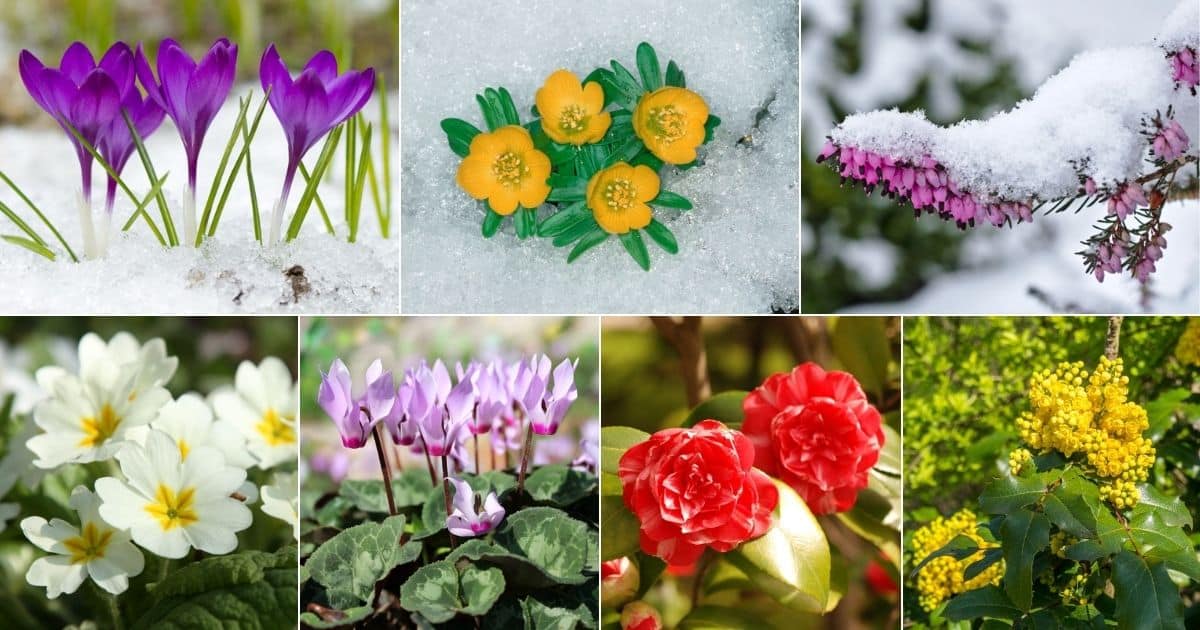
Good news! There are so many perennials, annuals, flowering plants, and shrubs that you can achieve a vibrant and radiant winter garden with.
Below are some of the most beautiful flowers that bloom in winter that you should really check out!
Jump to:
- Flowers That Bloom in Winter
- 1. English Primrose
- 2. Camellia ‘Camellia spp.’
- 3. Hellebores Niger
- 4. Winter Aconite ‘Eranthis hyemalis’
- 5. Winterberry
- 6. Witch Hazel ‘Hammamelis spp.’
- 7. Cyclamen ‘Cyclamen coum’
- 8. Scilla
- 9. Winter Jasmine
- 10. Snowdrop ‘Galanthus nivalis’
- 11. Winter Health ‘Erica carnea’
- 12. Pieris Japonica
- 13. Ornamental Cabbage and Kale ‘Brassica oleracea’
- 14. Viola
- 15. Leucojum
- 16. Crocus
- 17. Black Tulips
- 18. Mahonia
- 19. Daffodils
- 20. Glory of the Snow
- What Plants Are Likely To Be Killed By Frost?
- Final Note
Flowers That Bloom in Winter
1. English Primrose
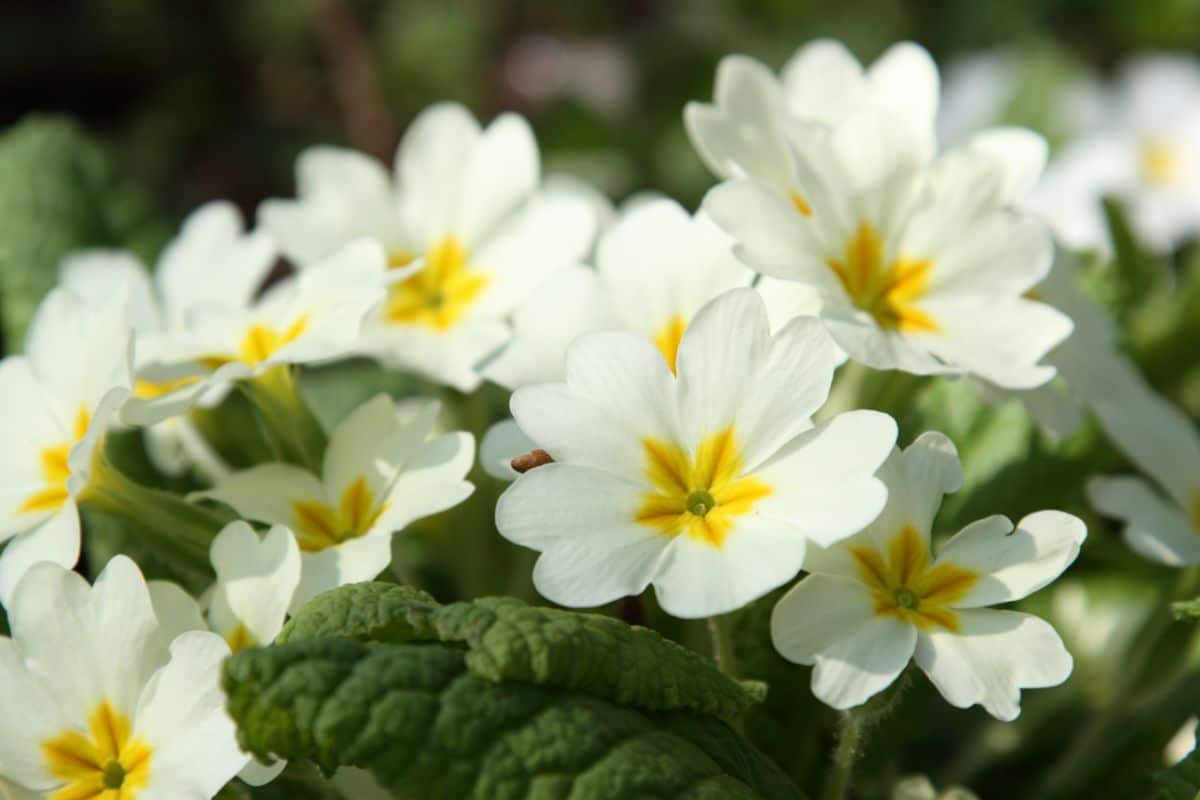
USDA Hardiness Zones: 3 - 8
The difference between English Primrose and many other primroses is the time of bloom. While many other primroses bloom in summer or spring, the English Primrose gives you a winter show.
During winter, its five-petaled flowers that are usually packed rightly display an array of flashy colors like pink, white, red, orange, and so on.
These plants are best situated along dark pathways as they will light up the space.
2. Camellia ‘Camellia spp.’

USDA Hardiness Zones: 7 - 9
Camellias look so much like roses. They are flagrant and radiant winter-blooming flowers. Sometimes its bloom takes place in early spring.
Camellias have a fascinating scent and would be best for pathways so passersby can get a whiff and enjoy the pleasantness it brings.
Camellias prefer partial shade light conditions. They have a height range of 2-12ft and a spread of 2-10ft.
3. Hellebores Niger
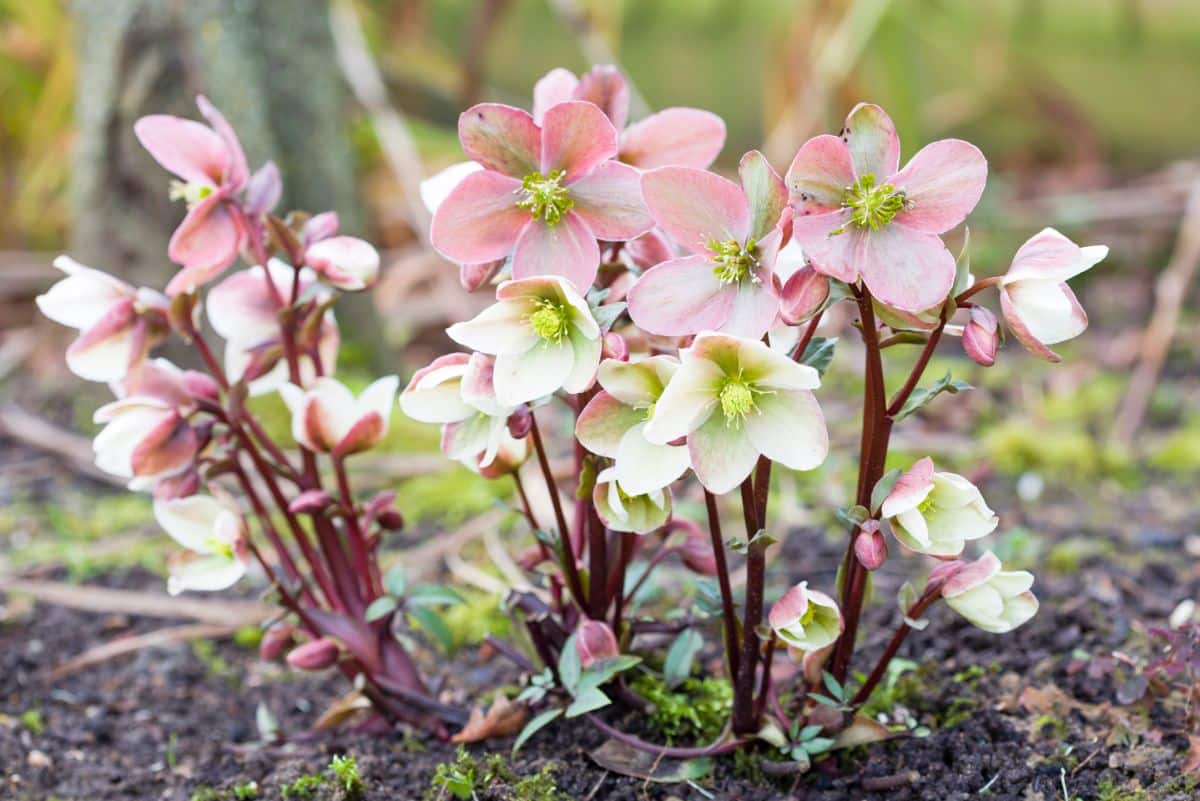
USDA Hardiness Zones: 4 - 9
Nicknamed Christmas Roses because of their nature to bloom in winter. Like the nickname tells you, the plant will grow to look just like roses in winter, spotting white flowers, bowl-shaped like that of wild roses.
Hellebores are also known as Lenten roses, as they usually bloom around Lent and then appear again in mid to late winter, depending on your location.
They prefer partial sun and moderate watering. The flowering plants look and feel soft and delicate, but in fact, they are pretty tough.
Plants are toxic to humans and pets, so keep them away from little children and animals.
The ideal light condition for this plant is shade in summer and sun in winter. Their height and width range is about 1-2ft.
4. Winter Aconite ‘Eranthis hyemalis’
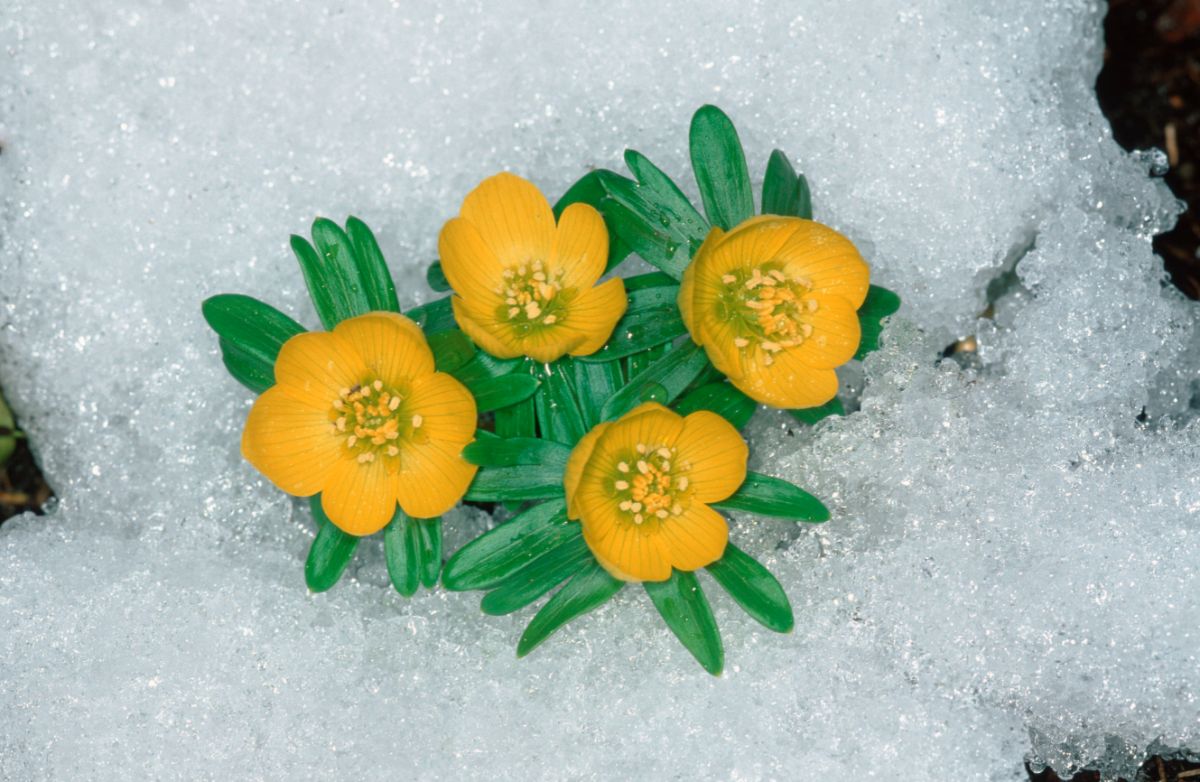
USDA Hardiness Zones: 3 - 7
The Winter Aconite gives us quite a show in winter. You will enjoy viewing the buttercup-looking blooms and ruffled foliage piercing through the snow.
An added advantage of this plant is that they are highly resistant to deer and rodents.
Winter aconites are toxic to both humans and pets. They have a mature size of about 6 inches and prefer full sun and partial shade.
5. Winterberry
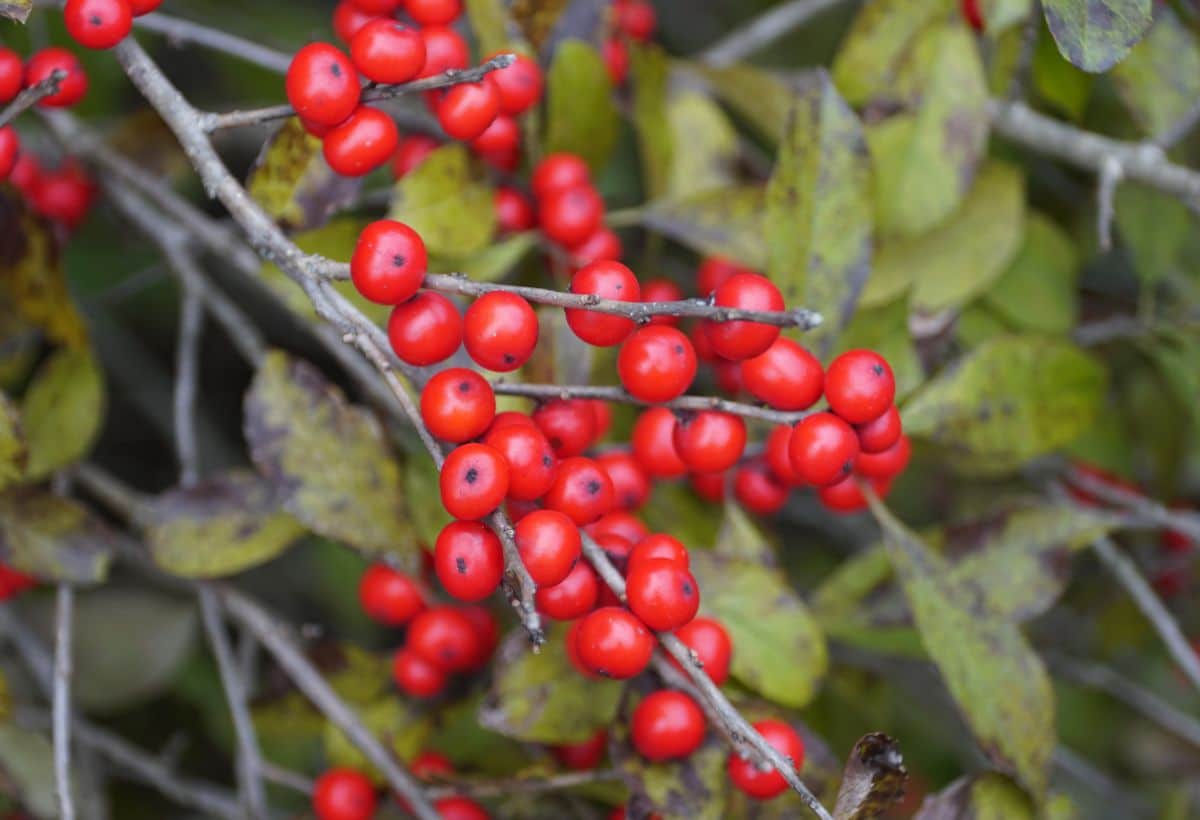
USDA Hardiness Zones: 3 - 9
Winterberries with berry-stacked branches look amazing in the snow. You will do well to plant a ‘male’ pollinator close to this deciduous shrub to get an ample supply of berries.
6. Witch Hazel ‘Hammamelis spp.’
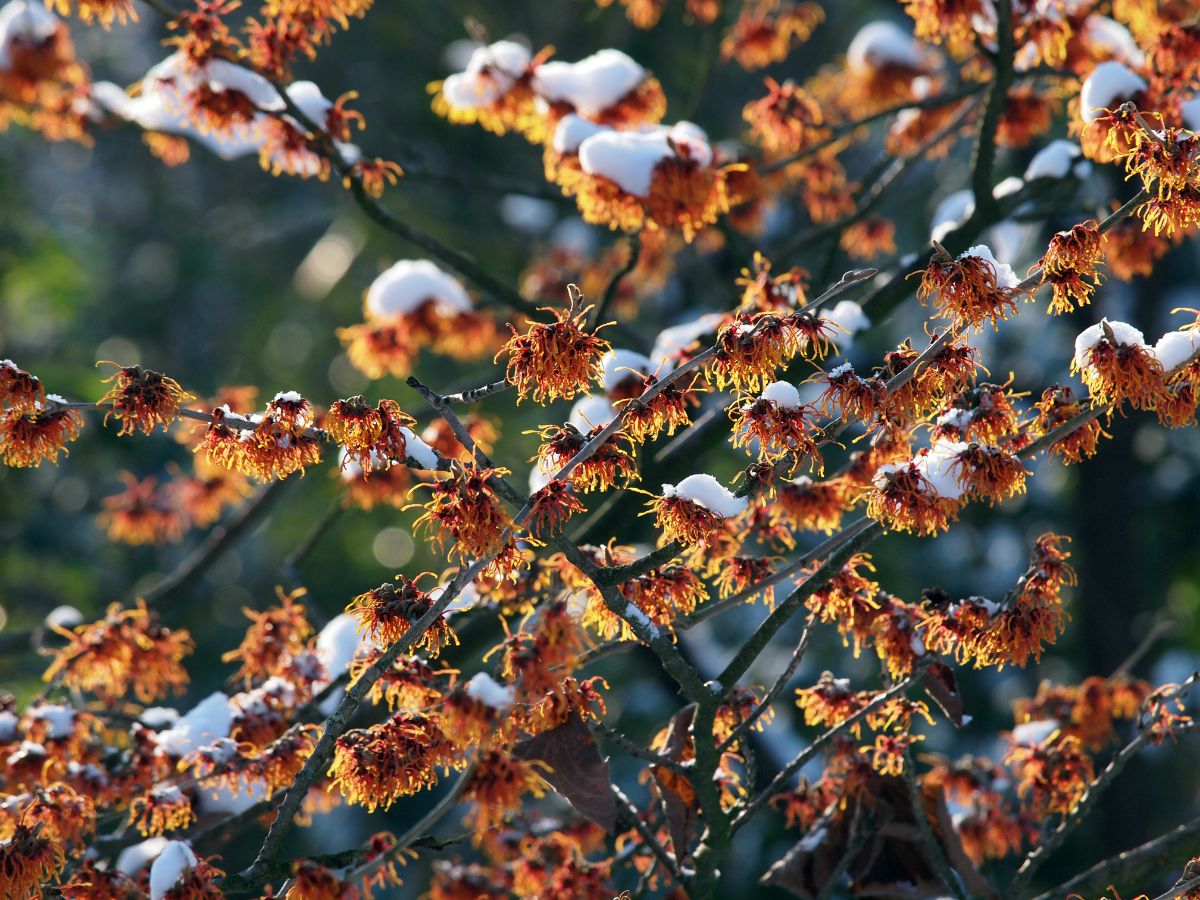
USDA Hardiness Zones: 4 - 8
There are various varieties of the Witch Hazel plant, so be sure to get the winter-flowering cultivars.
The witch hazel spots wispy-like flowers irrespective of how cold the climate is. In fall, they also make quite an attractive show with the shiny yellow foliage they spot.
The plant has a height and width range of 10-20ft. They prefer full sun to partial shade.
7. Cyclamen ‘Cyclamen coum’
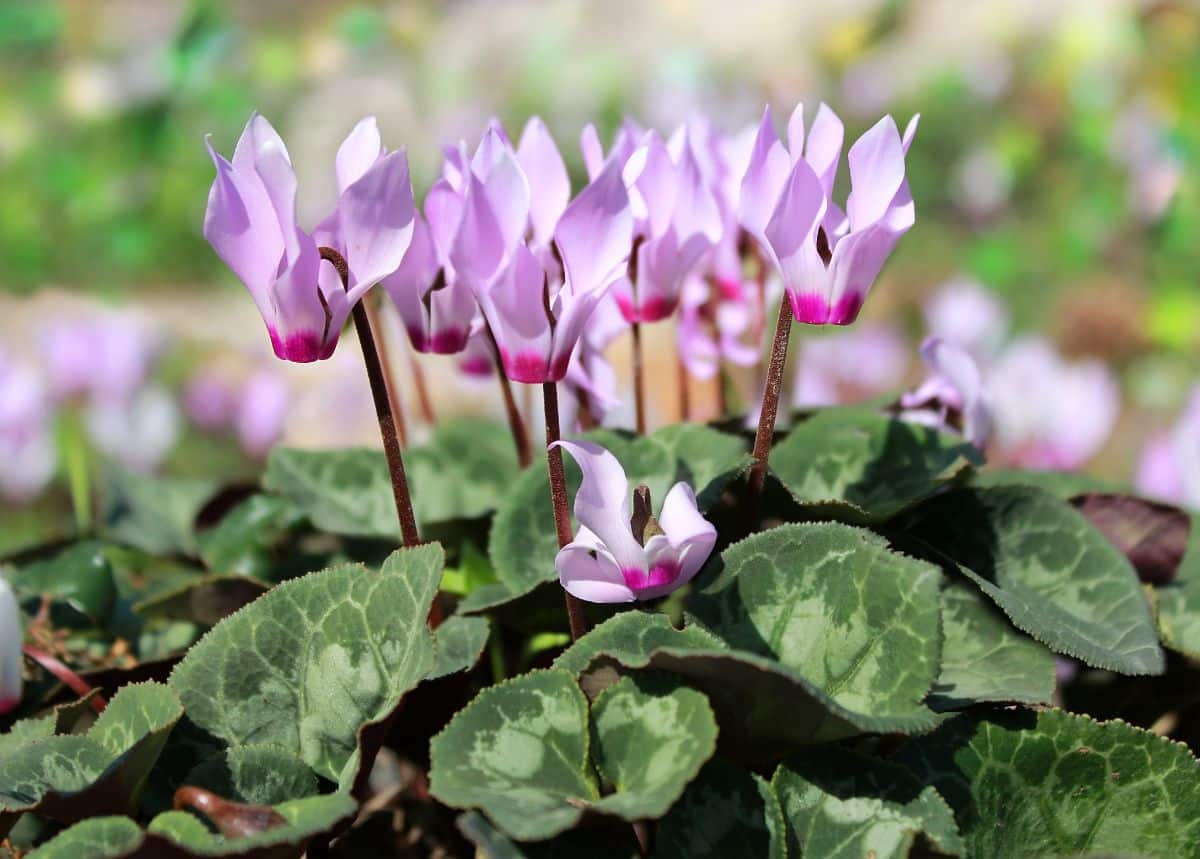
USDA Hardiness Zones: 9 - 11
Cyclamens are better suited as ground covers placed just under plants that shed off leaves. This move ensures that they get a fair share of both winter sun and summer shade.
The Cyclamen plant will make your space glow in winter with its stunning shades of white, fuchsia, pink, and lavender.
The plant has a mature size range of 6-9 inches in height and spread. They prefer partial shade light exposure.
Cyclamens have been proven to be toxic to both humans and pets.
8. Scilla
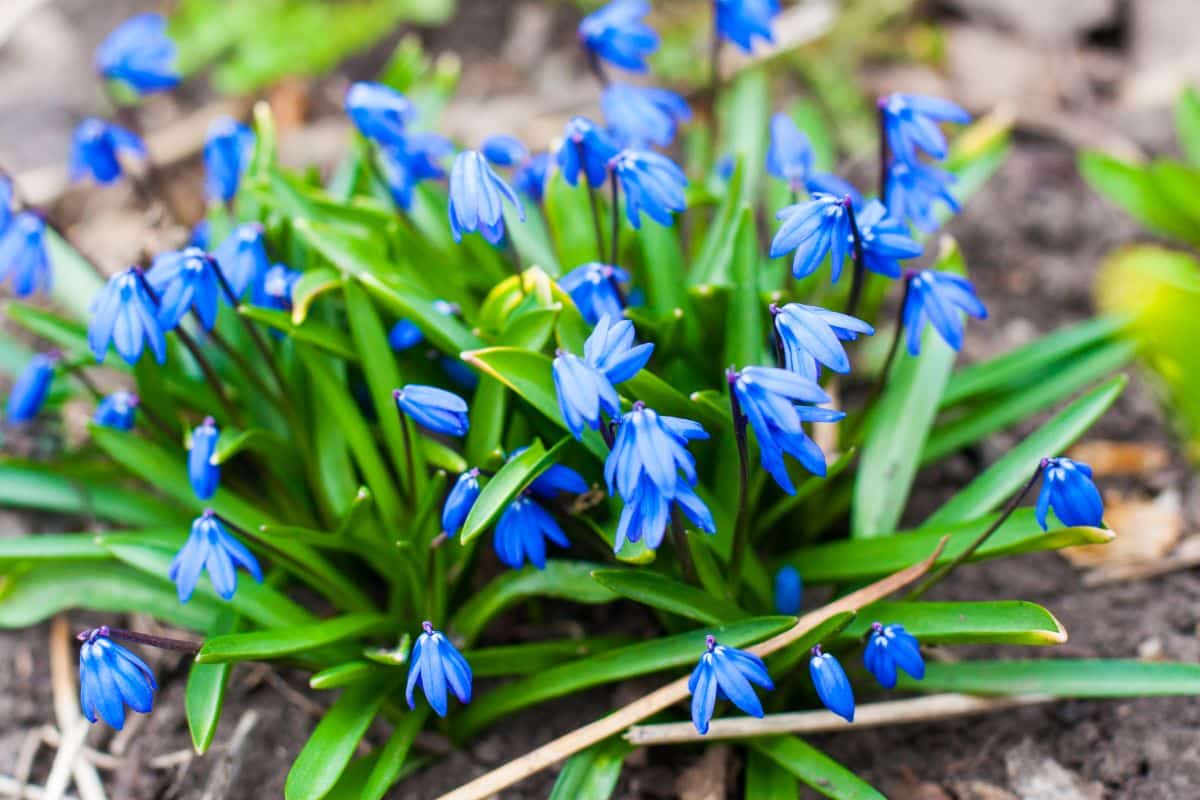
USDA Hardiness Zones: 2 - 8
Your go-to plant if you want a dash of color in late winter and early spring.
Scillas are mini-sized starry flowers in beautiful shades of pink, white, blue, violet, and pink.
9. Winter Jasmine
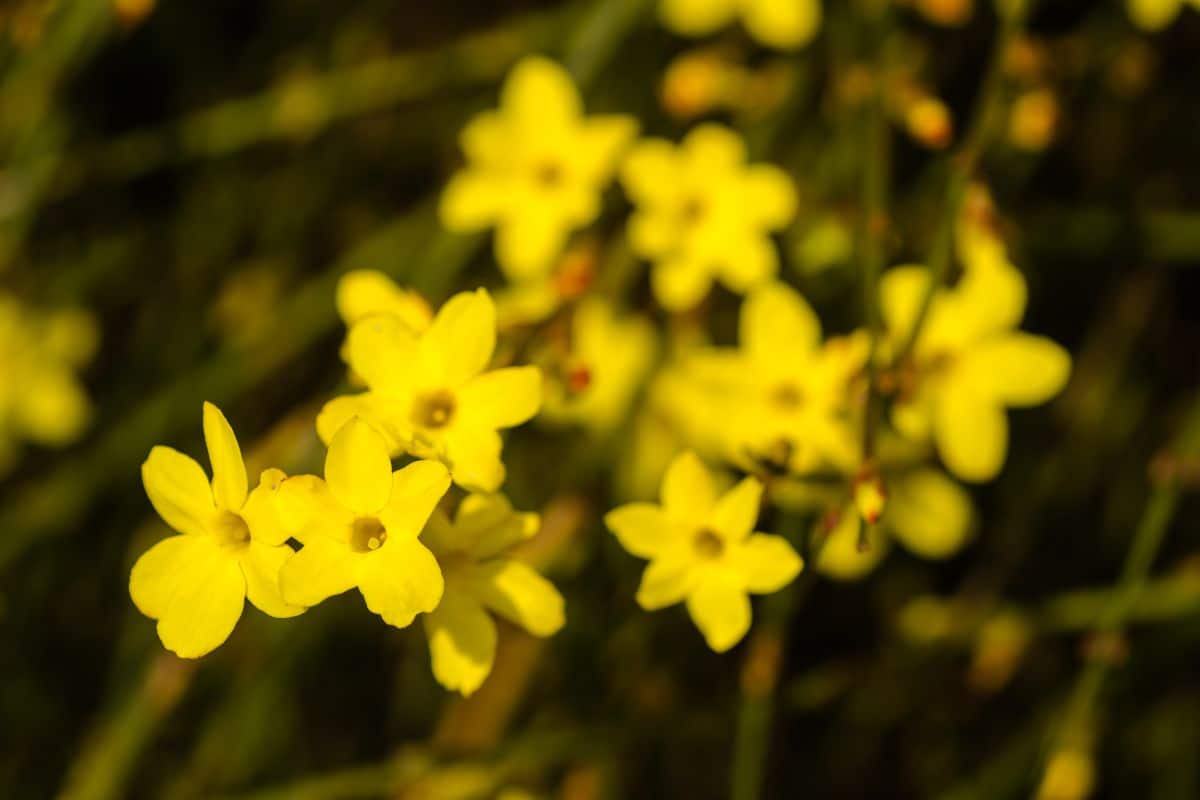
USDA Hardiness Zones: 6 - 9
This plant's visual delight in late winter is better witnessed than described.
Winter jasmine are compact shrubs that present long arching branches filled with beautiful yellow flowers in winter.
10. Snowdrop ‘Galanthus nivalis’
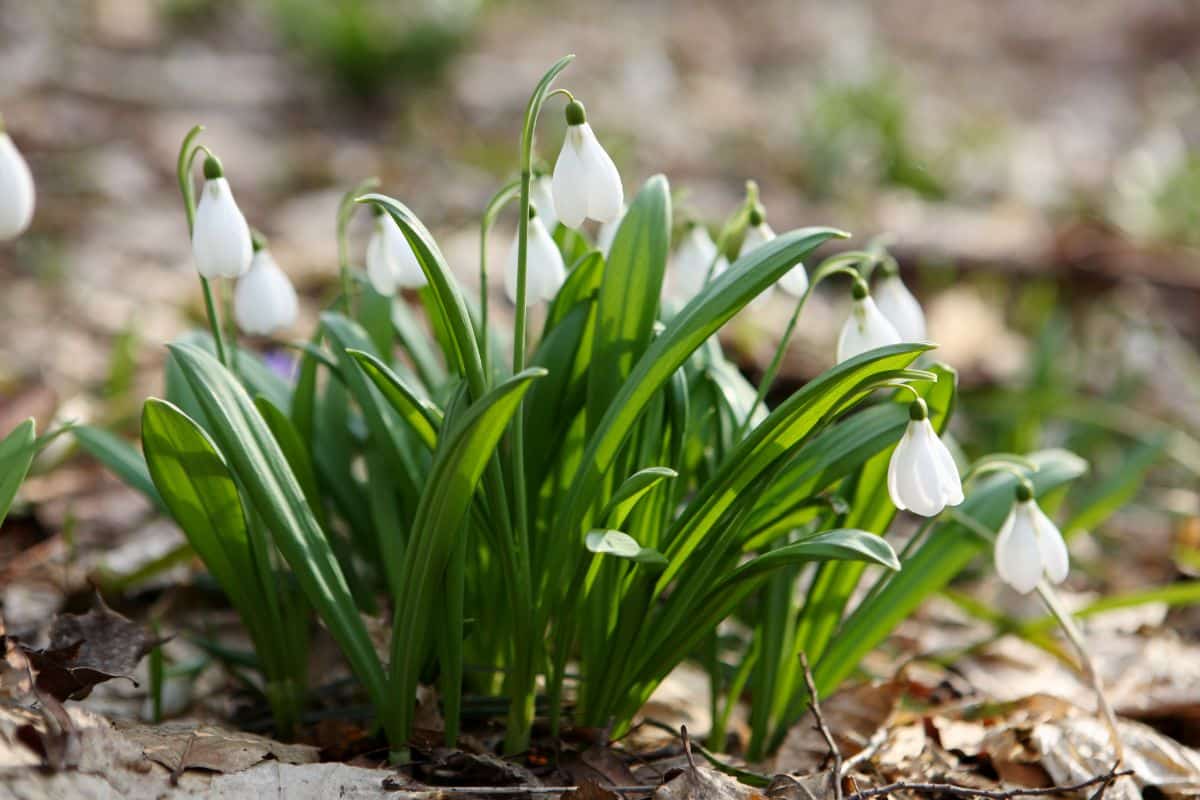
USDA Hardiness Zones: 3 - 8
The name Snowdrop was rightly adopted for this plant as it usually begins flowering when snow is still on the ground, showing off a small, delicate-looking combination of pale green and white flowers.
Another name for Snowdrops is Galanthus; they give a better visual effect when planted in mass with their compact plant size of 3-6inches.
The name Snowdrop does have an appetizing ring, but they are toxic to animals and pets.
Leave plants to enjoy full sun to partial shade light exposure.
11. Winter Health ‘Erica carnea’

USDA Hardiness Zones: 6 - 8
One striking feature of this plant is its heavy bloom. The evergreen shrub is known to have an intense color, flowering continuously for weeks, mainly in the year's first quarter.
They bloom beautifully even in the snow, too, gracing your garden with lovely plants covered in sweet pink blossoms.
12. Pieris Japonica
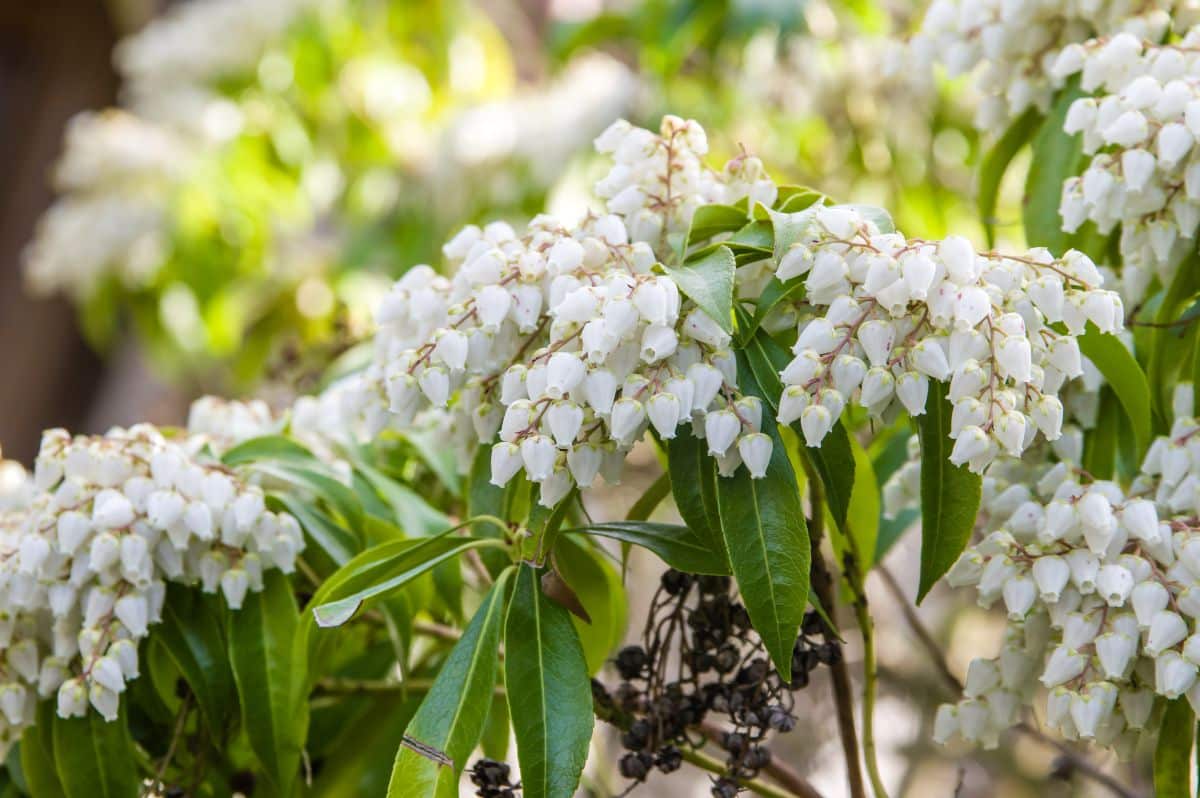
USDA Hardiness Zones: 5 - 8
This evergreen shrub usually looks like a mass of bell-like flowers that bloom in late winter, lasting for several weeks.
The flowers make such a beautiful sight swinging gracefully from the stems.
Under the right light conditions (full sun to partial shade,) they can grow as tall as 12ft and as broad as 6ft.
Please do note that Pieris Japonica is toxic to both humans and pets and, therefore, should be handled with care.
13. Ornamental Cabbage and Kale ‘Brassica oleracea’
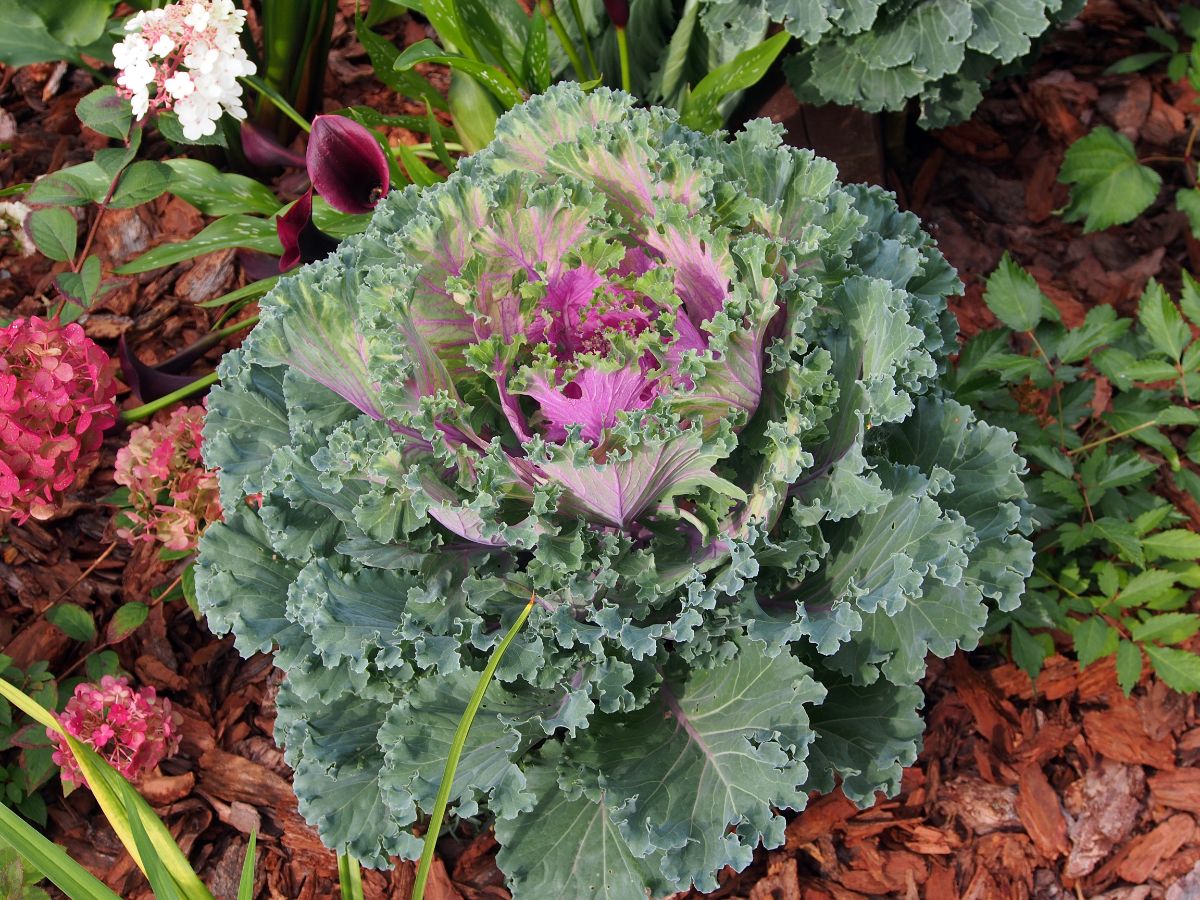
USDA Hardiness Zones: 2 - 11
These are cold-loving plants. They desire to be planted during the cold. If grown during warmer months, it would be quite a struggle to get them well established.
The plant boasts lovely showy ruffled leaves in alluring shades of rose, cream, and purple.
An intriguing fact about the colors of this plant is that, as it gets even colder, they shine out more.
Ideal light conditions: full sun. Its mature size is about 12-18inches in height and width.
14. Viola
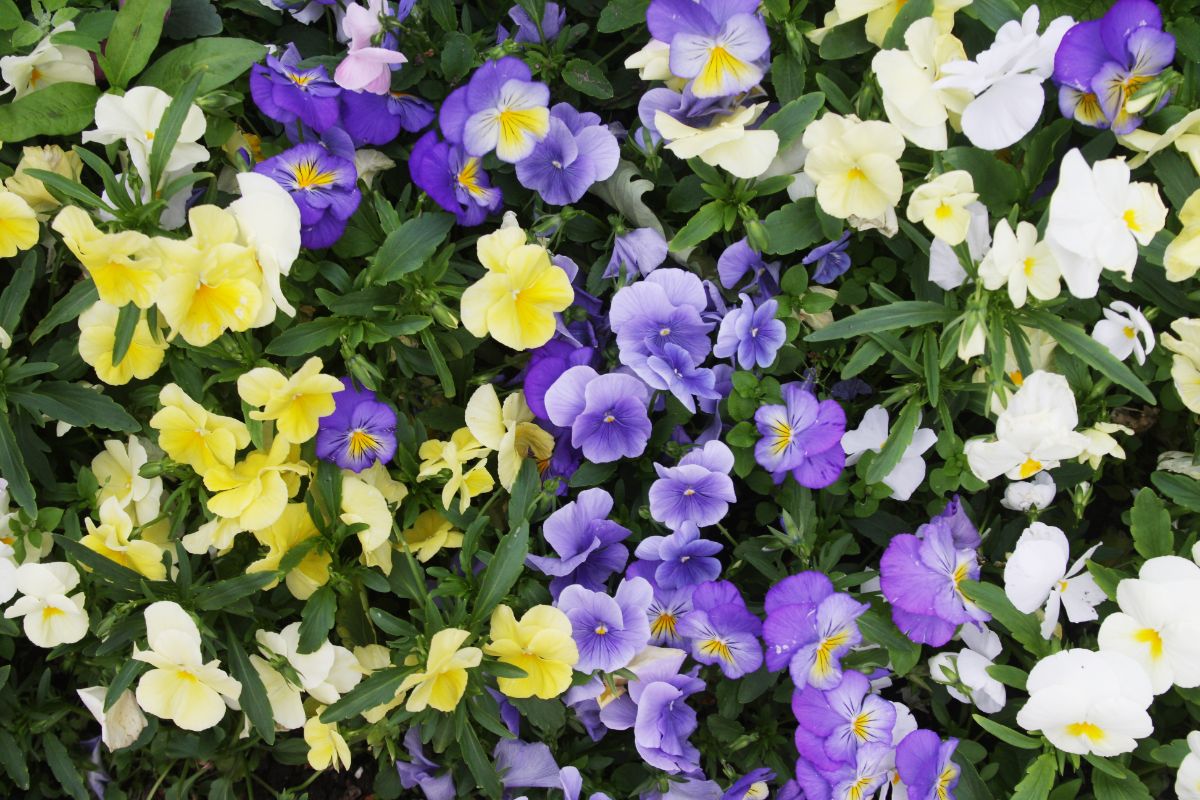
USDA Hardiness Zones: 4 - 9
Violas are mostly annual plants, but it is not unusual to see them drop off seeds and germinate singlehandedly during spring.
This feature above is what they have in common with Pansies.
Violas are fairly sturdy plants, capable of tolerating light frosts in moderate climates, thriving from fall to winter.
15. Leucojum
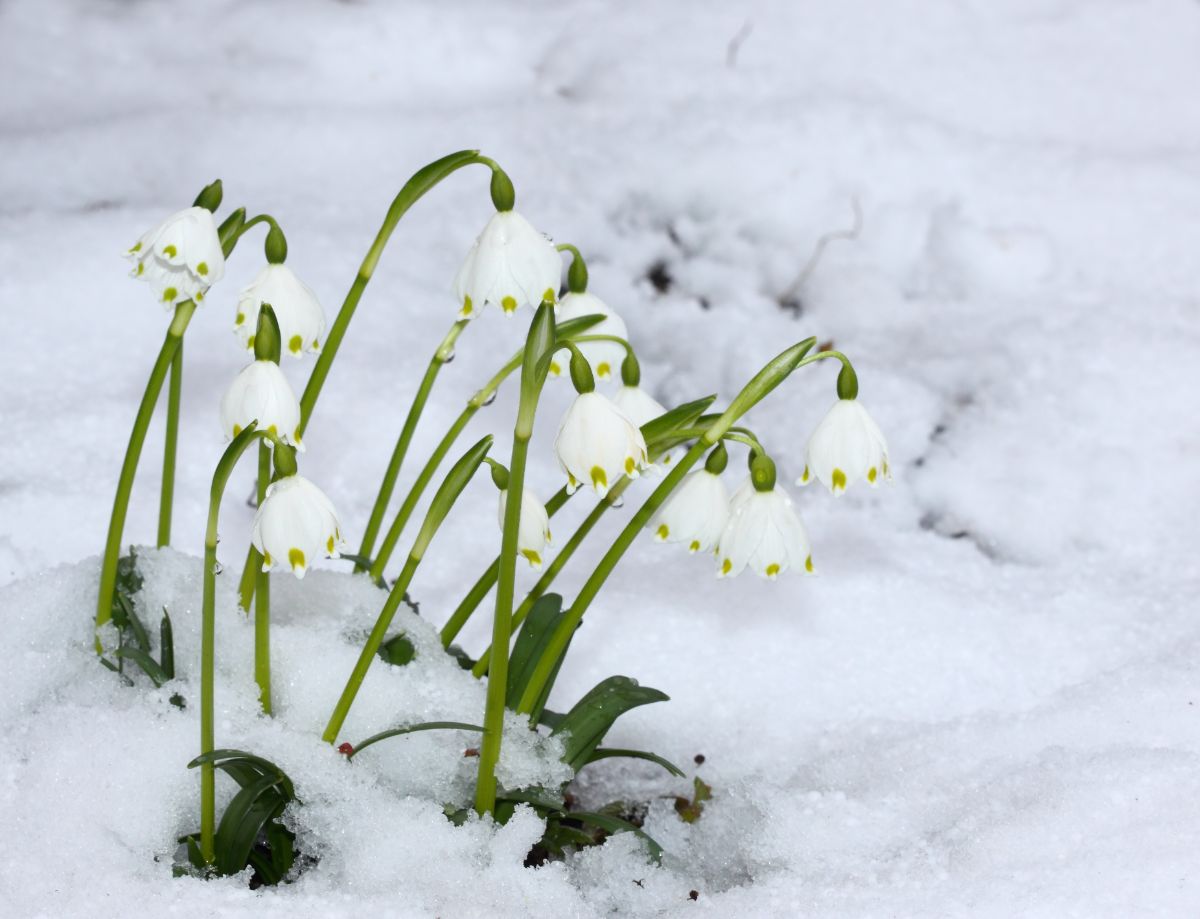
USDA Hardiness Zones: 3 - 9
Leucojums are sure to make their first appearance before the snow clears off the ground. A simply stunning impression they make while they are at it.
This plant is shaped like a bulb with elegant bell-shaped flowers on a sharp-looking but thin foliage. They are perfect for rock gardens.
16. Crocus
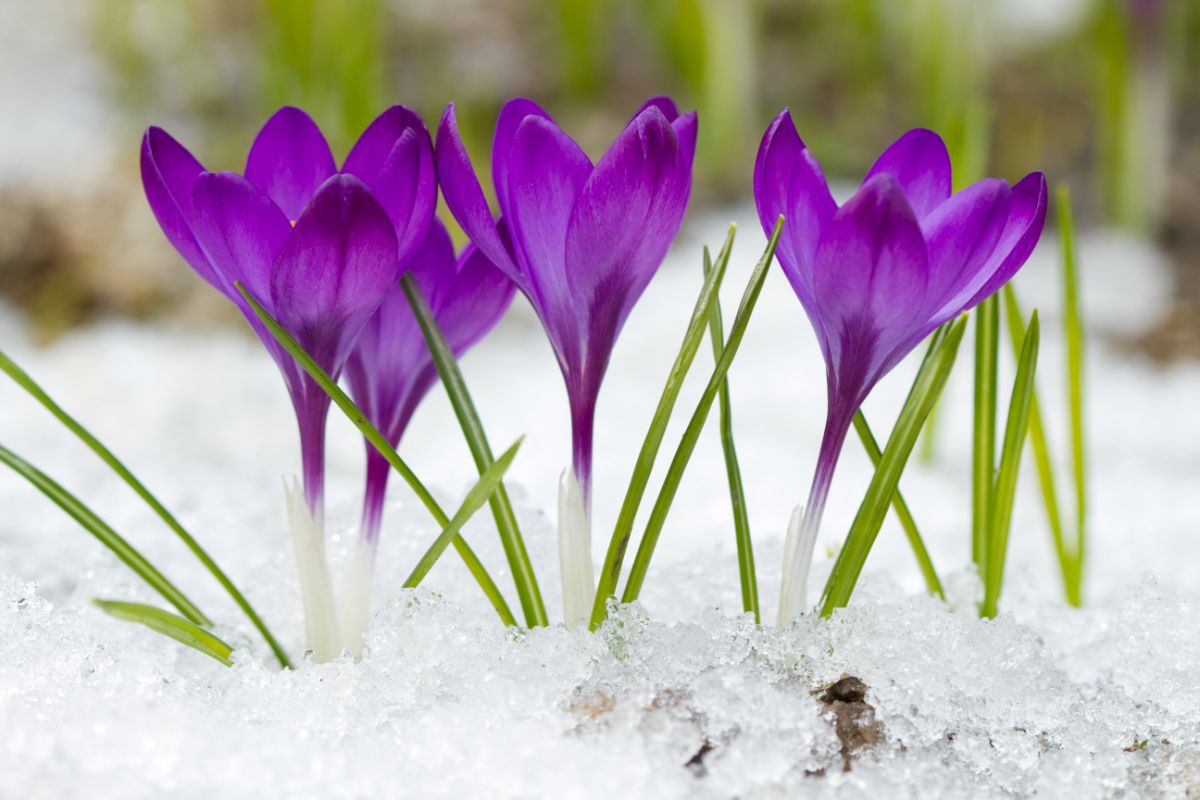
USDA Hardiness Zones: 3 - 8
An equally perfect plant for rock gardens or pathways as they are sure to light up the shady place with a dash of their bright colors.
Crocus is beautifully shaped like a cup. The flowers stick out their heads through the snow when they bloom in late winter to early snow.
17. Black Tulips
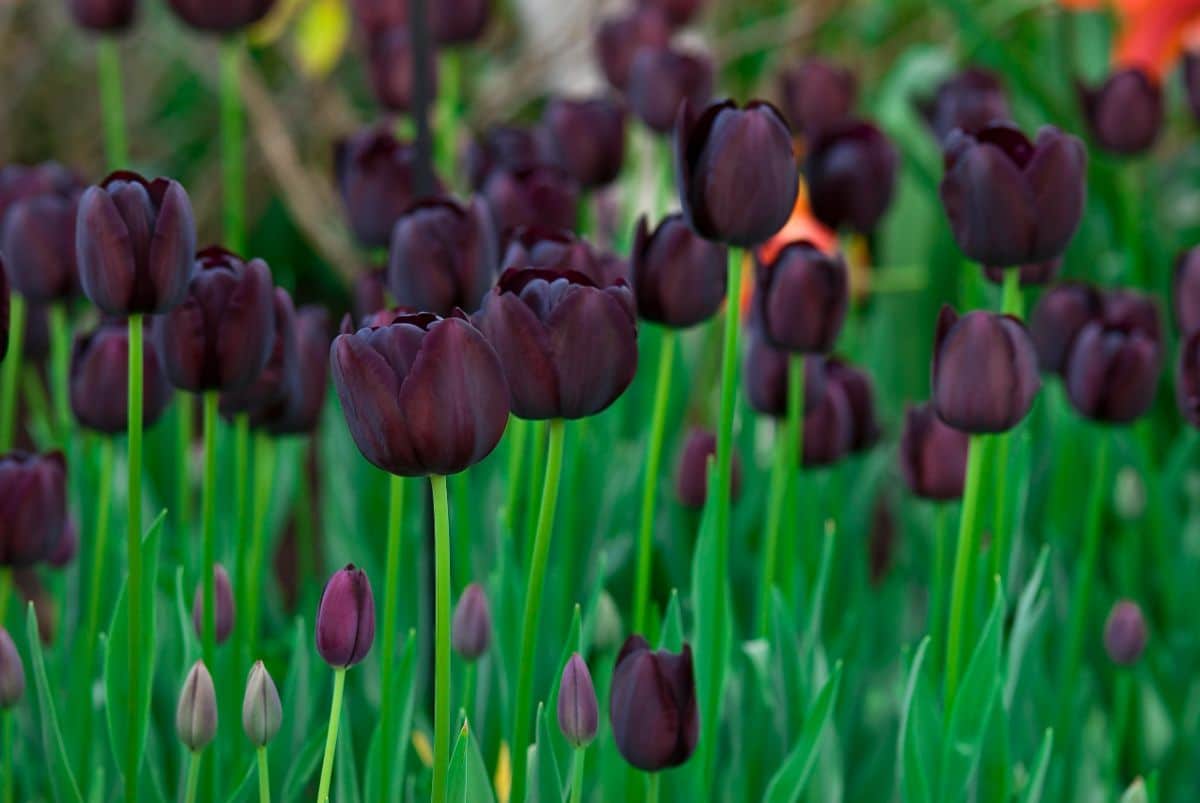
USDA Hardiness Zone: 5
Black Tulips deserve a spot on this list as they have shown they can comfortably handle cold temperatures even though most people associate them with spring.
They are best planted during fall to get a minimum of about 8 - 10 weeks in the ground needed to prepare them sturdy enough for a late winter/early spring bloom.
Another name they go by is; the Queen of the Night tulips.
18. Mahonia
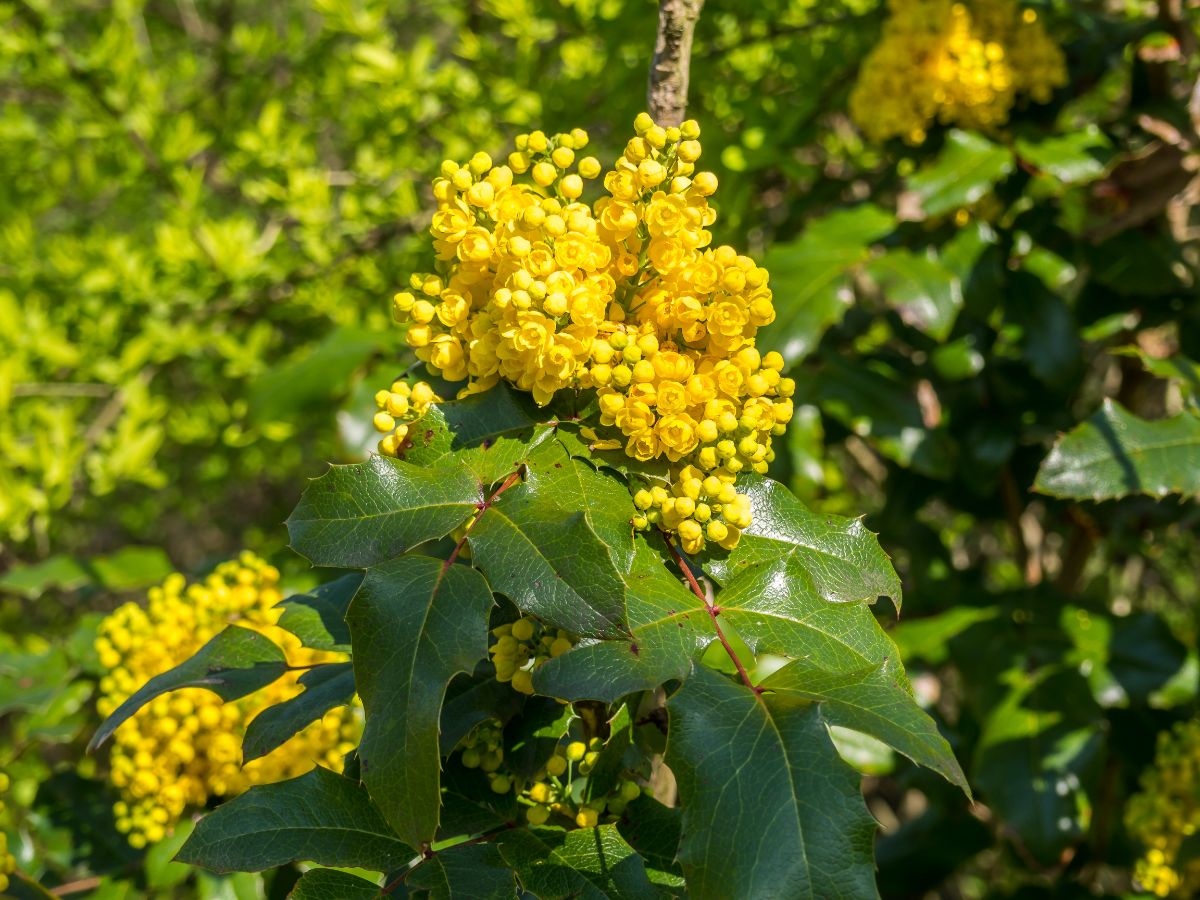
USDA Hardiness Zone: 6 - 9
You enjoy a pleasant display of shiny yellow flowers and frond-like leaves when this evergreen shrub blooms in late fall or early winter.
There are different varieties of Mahonias, so be sure to get the winter-loving variants.
19. Daffodils
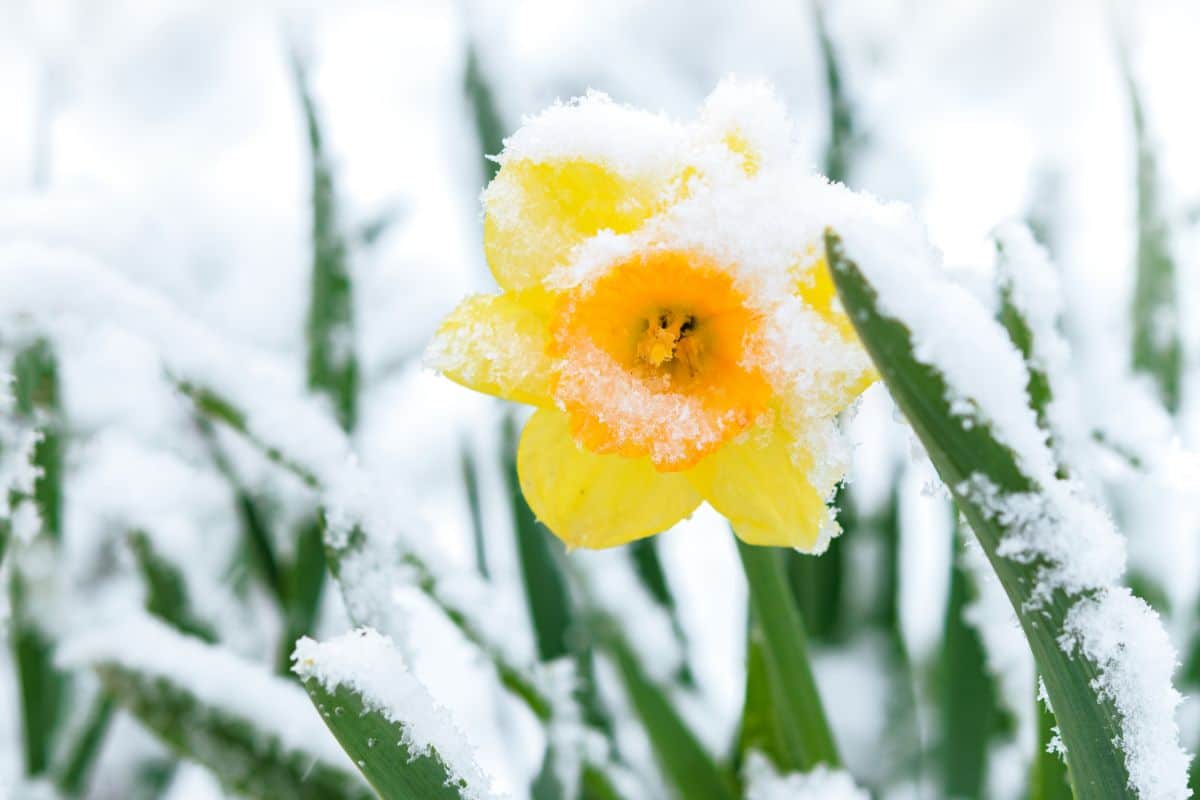
USDA Hardiness Zones: 3 - 8
Daffodils are early spring bloomers. They bless your gardens with their bright, sunny flowers. Other times, they will bloom as early as February.
To get them firmly established, have the bulbs planted 3 - 4 weeks before the first frost. This will give the plant enough time to strengthen its root base.
20. Glory of the Snow
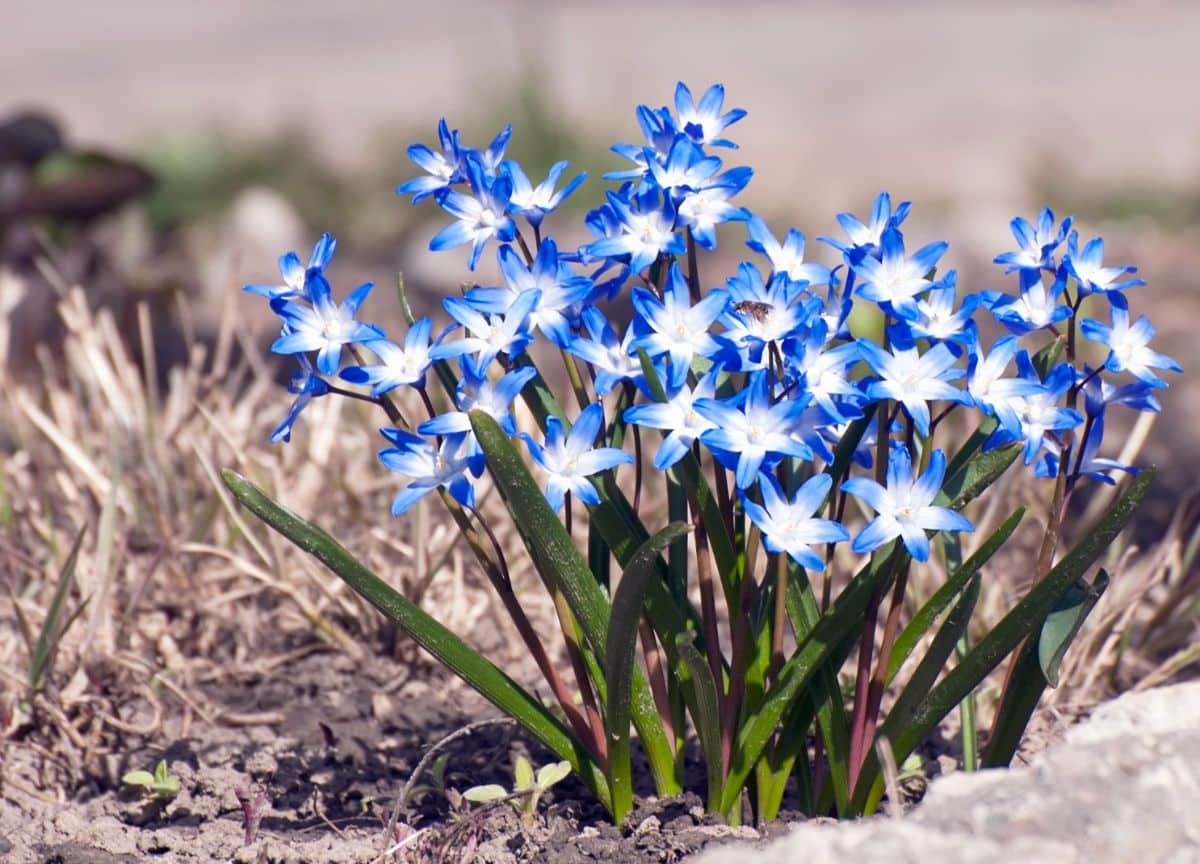
USDA Hardiness Zone: 3 - 8
Living true to their name, these beauties are known to peek through the snow even in the coldest climates, beautifying your space with their captivating colors of blue, white, and pink.
They are perfect for border plants and rock gardens.
What Plants Are Likely To Be Killed By Frost?
Most summer annual flowers or vegetables fall into this category. Examples are Marigolds and impatiens. They are least likely to tolerate cold and frost.
Subtropical and tropical plants, too, are yet another frost-sensitive set.
Final Note
Your garden does not have to look gloomy in winter. There are so many plants that can thrive even in the coldest of climates.
However, the key to choosing a plant for winter bloom is to verify if it conforms with your area of residence by looking at the USDA Hardiness Zone.
With our list of the best flowers that bloom in winter, we’re sure to have convinced you to give the winter garden a try.




